Remixing OER
Rachael Nevins
Adapting and integrating OER into your project requires more than a simple copy and paste. Thought and care are needed so that you end up with a structurally consistent project that is responsive to your audience, even when your audience is different from the audience of whatever OER you’re adapting.
There are four things to think about when you revise or remix OER.
- The content or information you want your students to learn
- Licensing
- The needs of your students
- The structure of your OER
To illustrate these four considerations, let’s compare a chapter in Finding and Using Openly Licensed Images: A Quick Guide for Students, a book I created, with a chapter in Creative Commons Certificate for Educators, Academic Librarians, and Open Culture, which I adapted for my book.
The first two considerations—the content or information you want your students to learn and licensing—can help you to identify what OER you can or cannot adapt.
The Content or Information You Want Your Students to Learn
Obviously you’re looking for OER that covers the material that you want to include in your course. You might find an OER that covers the basic information you want to include in your project, but you decide to enhance or add to what you’ve found. Or you might find an OER that is quite extensive, and you need only excerpts from this OER for your project.
Finding and Using Openly Licensed Images: A Quick Guide for Students is a narrowly focused OER, just about finding and using openly licensed images, and its audience is students. This focus and audience guided me in selecting OER to adapt.
I wanted to include a chapter covering the basics of copyright for students, and for this purpose I adapted the chapter “2.1 Copyright Basics” from the Creative Commons Certificate course.
I knew that this material from Creative Commons was credible (I was taking the certificate course at the time), and it provided the information I needed clearly and accurately. There was no need to write an explanation of copyright on my own because everything I needed was in that chapter. The chapter is quite extensive, however, and includes a lot of material I didn’t need. Students who want to know if they can use an image in their schoolwork probably don’t need to know about the rationale for copyright law or the differences between trademark law and patent law, and so on. So I decided to excerpt from this chapter, not use the whole thing.
What I’ve just described isn’t so different from selecting and preparing materials for a course, which you do all the time. The remaining considerations are more specific to adapting materials for an open textbook.
Licensing
The second consideration is, what license is on the OER you are adapting, and is that license compatible with (a) the license you are planning to use for your OER and (b) the license on other materials you are adapting or adopting in your OER?
There are six different Creative Commons licenses, plus the public domain dedication, each of which grants different permissions.
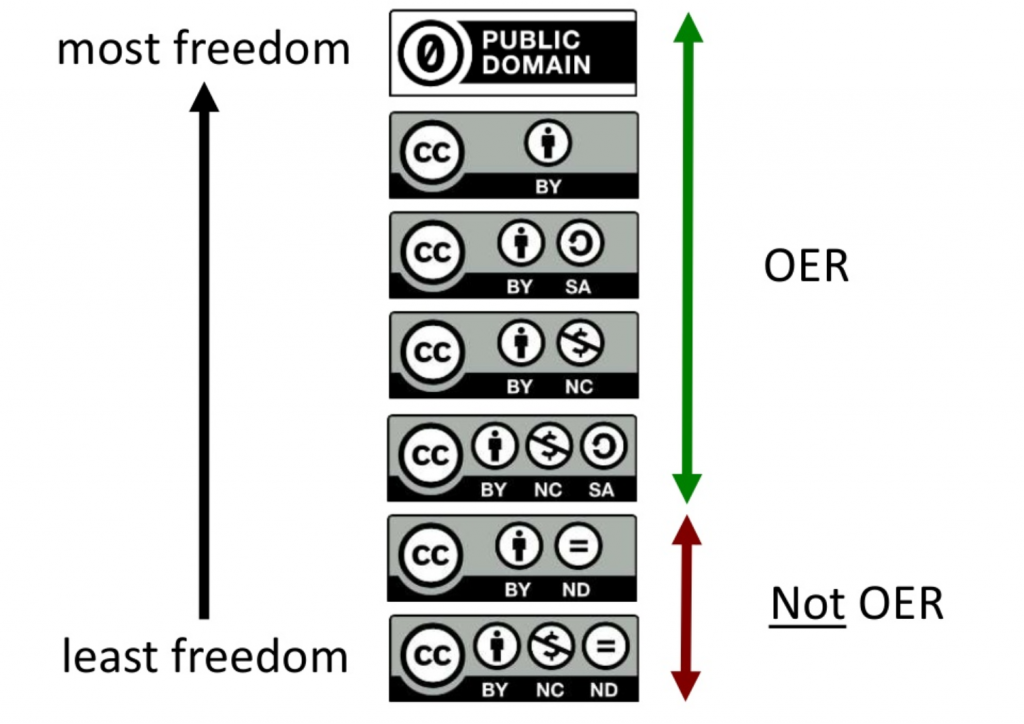
For example, two of those licenses, CC BY-ND and CC BY-NC-ND, do not allow you to make adaptions that you share with others. In other words, you might find something that has a Creative Commons license on it, but that doesn’t guarantee that you can adapt it! If that Creative Commons license includes the ND or No Derivatives element, then you can’t adapt it for your project, you can only reuse it as is.
In my case, the materials for the Creative Commons Certificate course are licensed CC BY 4.0. This license gives users permission to reuse, adapt, and distribute the materials for any purpose, including commercial purposes, as long as they attribute the creator. It’s the most open Creative Commons license. My guide is licensed CC BY-NC 4.0, so it’s a little more limited. People can reuse, adapt, and distribute my book only for non-commercial purposes, and they need to give me credit. Materials licensed CC BY can be adapted for an OER licensed CC BY-NC. So the licenses are compatible.
The Needs of Your Students
Once you’ve identified OER you can adapt, you need to identify what additional changes you might want to make, beyond just excerpting or expanding on the content.
So your third consideration is the needs of your students. You might want to gloss domain-specific vocabulary or add illustrations to ensure that the material you are adapting is clear for your students. You might want to change examples and/or exercises so that the situations they illustrate are culturally relevant for your students.
Finding and Using Openly Licensed Images: A Quick Guide for Students has a narrow focus and a very different audience than the Creative Commons Certificate course, which is for professionals. So overall my goal in adapting the materials from Creative Commons was to streamline things for students. Whereas the materials from Creative Commons are comprehensive, the chapters in my guide are short and sweet. Also, each of the chapters in my guide follows a simple structure, including learning objectives, a short introduction, and then a little bit of content. See how the chapter “What Is Copyright?” compares with other chapters in the book—they include recurring elements that follow a predictable structure.
The Structure of Your OER
The predictable structure of a textbook helps readers comprehend the text. So the fourth and final consideration when adapting OER for your project is, what changes or additions need to be made so that the material you are adapting matches the structure of your project. If you are including lesson objectives at the beginning of each chapter of your book, then you will need to add lesson objectives to any adapted chapters. You might need to change the heading structure of the material you are adapting so that it matches the heading structure of your chapters. You might need to change the way that picture captions are structured. And so on.
For an example, I’ll show you the specifics of the changes I made for the chapter “What Is Copyright?” in my guide.
Each chapter begins with a textbox listing learning objectives.
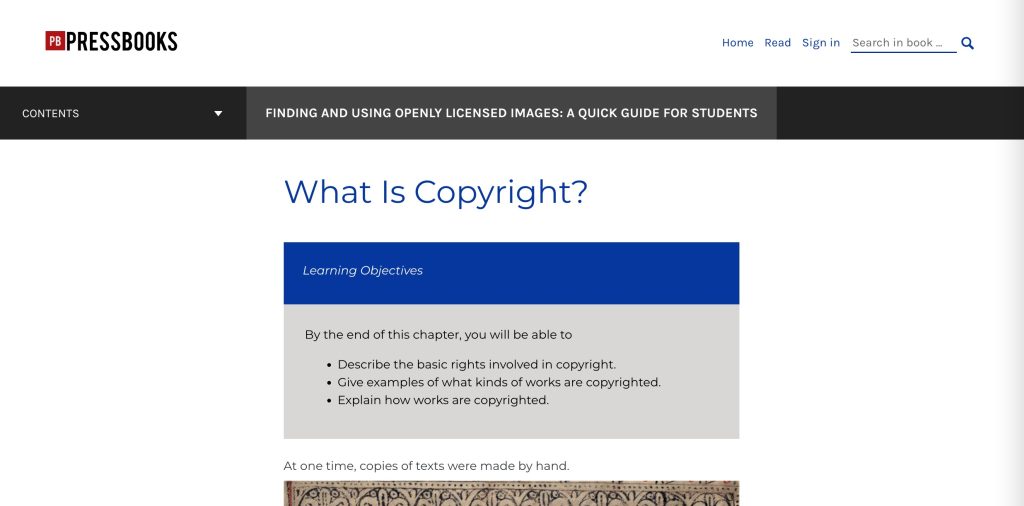
Whereas “2.1 Copyright Basics” from the Creative Commons Certificate course begins with learning outcomes, a big question—Why does copyright matter?—and a personal reflection—Why does copyright matter to me?
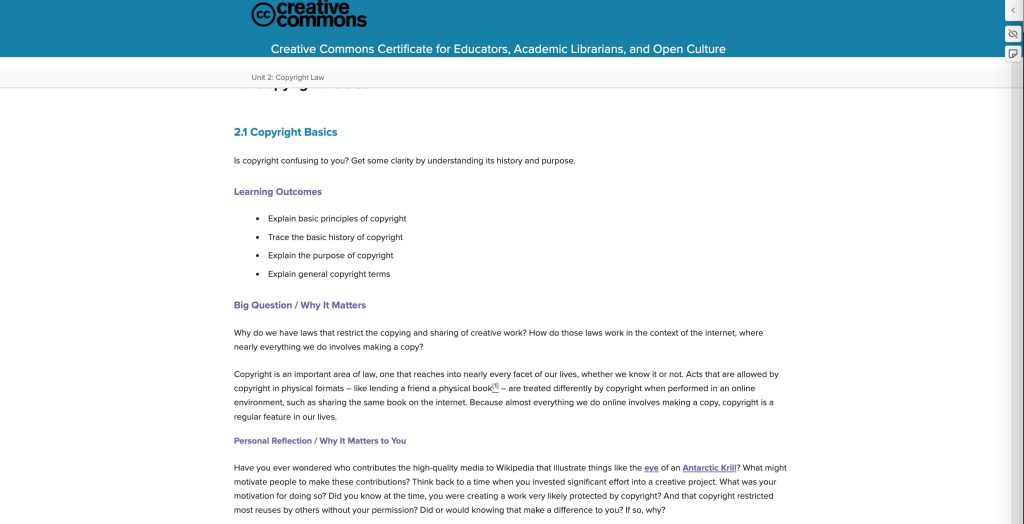
This material is thoughtful, and it’s suitable for the audience of the Creative Commons Certificate course, but it’s not what I wanted for my student guide just about finding usable images, so I didn’t use any of this material in my guide. Instead, I wrote my own learning objectives that apply to my own chapter.
The numbered list under the heading “Acquiring Essential Knowledge” in “2.1 Copyright Basics” from the Creative Commons Certificate course was the basis of most of the content that I included in my chapter.
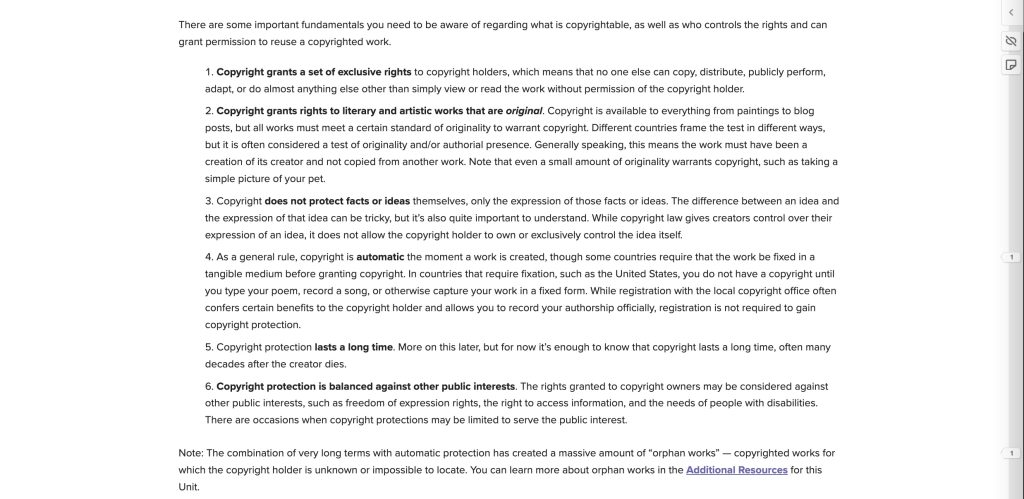
However, instead of a numbered list, I used a question-and-answer format. The oldest textbooks were catechisms, so this is a very old structure, which I really like. So I transformed the numbered list in the Creative Commons materials into a series of paragraphs introduced by a question. The question highlights what each paragraph is about.
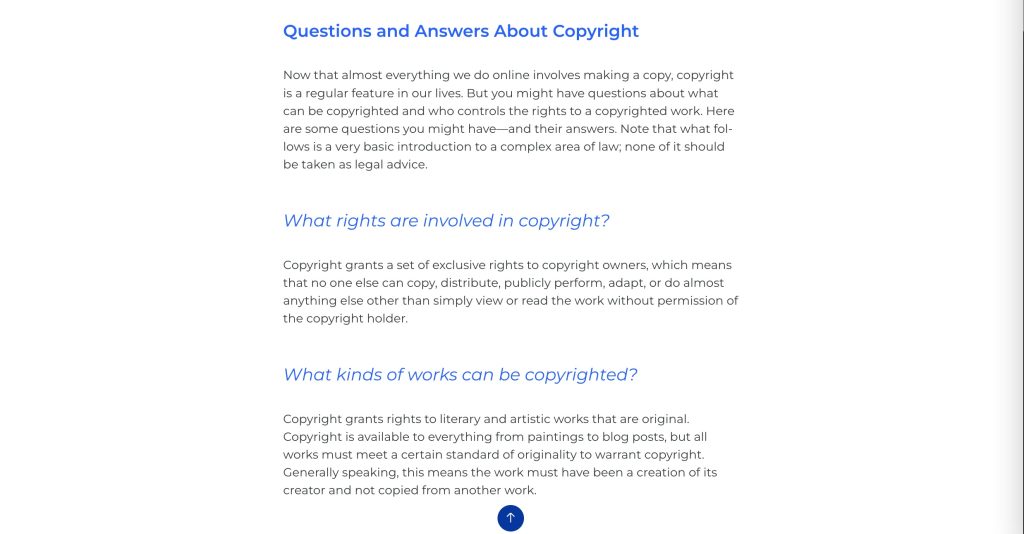
But here’s another thing I did. The numbered list in the Creative Commons Certificate course materials includes six items, but there was a seventh concept that I wanted to be sure to include in my chapter on copyright, about who owns the copyright to a creative work. In the Creative Commons materials, this concept is treated separately. But I wanted to include this information as part of the main body of the chapter, so it’s just another question on the list of questions.
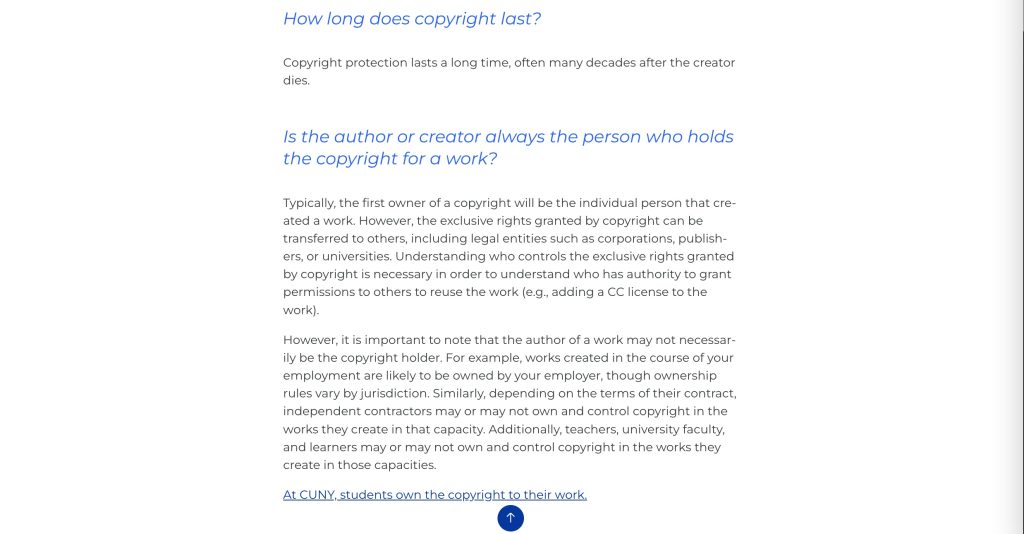
I also added CUNY-specific information. At CUNY, students own the copyright to their work, and they can click on the link to get more information about fair use and copyright at CUNY.
Finally, at the bottom of my chapter I included the attribution, crediting Creative Commons as the creator of the work I adapted. I also listed everything that I had changed in adapting that source: I wrote new learning objectives, I wrote new introductory text, and I created the question-and-answer format. So that tells any user of my materials what I added to the Creative Commons materials in adapting it.
Attributions
This chapter includes images from “2.1 Copyright Basics” by Creative Commons, licensed CC BY 4.0 and “What Is Copyright?” by Rachael Nevins, licensed CC BY-NC 4.0.
